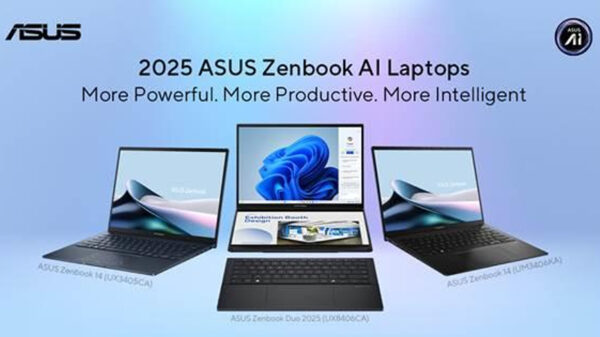IBM announced new services and solutions backed by a broad ecosystem of partners to help enterprises and telecommunications companies speed their transition to edge computing in the 5G era. This effort combines IBM’s experience and expertise in multicloud environments with Red Hat’s industry-leading open source technology, which became part of IBM last year in one of the biggest tech acquisitions of all time.
For organizations worldwide, the rollout of wireless 5G telecommunications networks, which bring blazing speed and extremely low latency—and minimal transmission delays—to mobile data, is designed to accelerate the utility of edge computing. With new edge services, IBM Business Partners and open multicloud solutions from IBM, enterprises will be able to tap into the potential of 5G to support crucial uses like emergency response, robotic surgery or connected-vehicle safety features that benefit from the few milliseconds latency saved by not having to send workloads to a centralized cloud.
“In today’s uncertain environment, our clients are looking to differentiate themselves by creating more innovative, responsive user experiences that are adaptive and continuously available – from the data center all the way out to the edge,” said Denis Kennelly, general manager, IBM Hybrid Cloud. “IBM is helping clients unlock the full potential of edge computing and 5G with hybrid multicloud offerings that bring together Red Hat OpenShift and our industry expertise to address enterprise needs in a way no other company can.”
IBM’s new offerings run on Red Hat OpenShift, the leading enterprise Kubernetes platform that runs everywhere — from the data center to multiple public clouds to the edge. They enable enterprises to overcome the complexity of managing workloads across a massive volume of devices from different vendors and provide telcos the agility they need to quickly deliver edge-enabled services to customers. Clients across industries can now fully realize the benefits of edge computing, including running AI and analytics at the edge to achieve insights closer to where the work is done. New solutions include:
- IBM Edge Application Manager – an autonomous management solution designed to enable AI, analytics and IoT enterprise workloads to be deployed and remotely managed, delivering real-time analysis and insight at scale. The solution enables the management of up to 10,000 edge nodes simultaneously by a single administrator. It’s the first solution to be powered by a breakthrough open source project, Open Horizon, created by IBM engineers designed to enable a single person to securely manage such a vast network of edge devices.
- IBM Telco Network Cloud Manager – a new solution offered by IBM that runs on Red Hat OpenShift, to deliver intelligent automation capabilities to orchestrate virtual and container network functions in minutes. Service providers will have the ability to manage workloads on both Red Hat OpenShift and Red Hat OpenStack Platform, which will be critical as telcos increasingly look for ways to modernize their networks for greater agility and efficiency, and to provide new services today and as 5G adoption expands.
- A portfolio of edge-enabled applications and services, including IBM Visual Insights, IBM Maximo Production Optimization, IBM Connected Manufacturing, IBM Asset Optimization, IBM Maximo Worker Insights and IBM Visual Inspector. All offer features to give clients the flexibility to deploy AI and cognitive applications and services at scale.
- New dedicated IBM Services teams for edge computing and telco network cloud that draw on IBM’s deep expertise to help clients deliver 5G and edge-enabled solutions across all industries.
In addition, IBM is announcing the IBM Edge Ecosystem, through which an increasingly broad set of ISVs, GSIs and more will be helping enterprises capture the opportunities of edge computing with a variety of solutions built upon IBM’s technology. IBM is also creating the IBM Telco Network Cloud Ecosystem, bringing together a set of partners across the telecommunications industry that offer a breadth of network functionality that helps providers deploy their network cloud platforms.
These open ecosystems of equipment manufacturers, networking and IT providers and software providers include Cisco, Dell Technologies, Juniper, Intel, NVIDIA, Samsung, Packet & Equinix, Hazelcast, Sysdig, Turbonomic, Portworx, Humio, Indra Minsait, Eurotech, Arrow Electronics, ADLINK, Acromove, Geniatech, SmartCone, CloudHedge, Altiostar, Metaswitch, F5 Networks and ADVA as members.
Businesses that have already been working with IBM to deploy edge computing technologies include Vodafone Business, which is working with IBM to help improve worker safety and productivity in remote locations such as oil rigs, factories, warehouses, ports and mines. Combining Vodafone Mobile Private Networks, IBM Edge Application Manager and Red Hat OpenShift, the new solution uses sensors, AI, as well as predictive and video analytics to understand and respond to incidents in milliseconds, keeping workers safe.
“At Vodafone Business, our primary focus is keeping our customers and their employees connected and safe, whether remote working or working from remote locations. Vodafone Mobile Private Networks, IBM edge computing and AI technologies enable companies to oversee operations even in the most remote locations, where rapid action can mean the difference between a near miss and a disaster,” said Vinod Kumar, CEO, Vodafone Business.
Samsung is collaborating with IBM and telecommunications provider M1 to develop and test Industry 4.0 solutions using 5G and edge computing for Singapore’s Infocomm Media Development Authority (IMDA).
“5G and edge will enable massive innovation for manufacturers, with 5G networks enabling phones and devices at the edge to deliver new AI-driven improvements to quality, productivity and safety. But the ability to achieve the scale and effectively manage the connectivity of the vast number of devices and sensors in a manufacturing environment is complex,” said KC Choi, EVP of Global B2B Sales, Samsung Electronics. “To address this challenge and enable Industry 4.0 innovation at scale, we’re collaborating to put IBM’s edge computing and AI solutions and Samsung end-to-end 5G network platform and mobile devices to work. Together, we’ll deliver new 5G enabled solutions leveraging sound and video insights as well as augmented reality to uncover anomalies that can occur throughout the manufacturing process.”
Equinix is building a reference architecture that brings the IBM Cloud Paks ecosystem to the edge of the network. With its interconnected Edge Metal infrastructure (powered by Packet bare metal technology), Red Hat OpenShift and IBM Edge Application Manager, enterprises can build edge applications once and deploy anywhere.
“Working with IBM on our Edge Metal Private Beta is a perfect example of how collaboration can enable enterprises to tap into the power of hybrid cloud for low-latency use cases,” said Zac Smith, Managing Director of Bare Metal at Equinix. “With interconnected, automated bare metal paired with edge computing and hybrid multi-cloud solutions from IBM and Red Hat, our customers can tap into a blueprint for rapid innovation at the network edge. Our Metro Edge locations will also have the advantage of enabling consolidation from the remote-on premises locations (edge-in) or migration from the cloud (cloud-out) and yet still remain close enough to where data is created and actions are taken to reduce latency, avoid bandwidth constraints, and retain a high level of operational resilience.”



















































































































